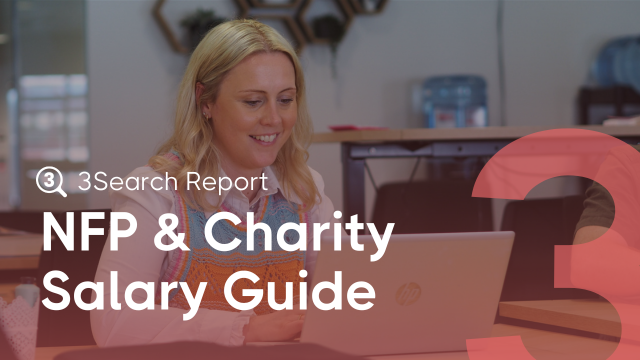
Whether you like it or not, your online life is quickly becoming an extension of your CV. Surveys have shown that 94% of hiring managers are using social media to either source candidates or to check up on them post-application meaning that how you appear online is more important than ever.
So whether you’re looking for your next job, considering your next career move, or just looking to set yourself up for future success it is vital to get your online life in order and to develop a professional online presence.
With this in mind, here is our three step process for using social media to find a job.
Step one: Google Yourself
Sites like LinkedIn, Facebook, Twitter and the rest allow employers to get a broader insight into your character, attitude and personality than your CV, cover letter and even an interview permit — while they also offer job seekers new and exciting opportunities to present their work and connect with potential employers.
Unfortunately, more opportunities to present yourself positively also means more opportunities to trip up. So, before you even consider starting to use social media to find work you need to carry out a comprehensive ‘clean up’ of your online life.
In his book, So You’ve Been Publicly Shamed, the journalist Jon Ronson tells the stories of a number of social media users who, through a moment of poor judgment, saw their careers destroyed. Take the example of Connor Riley, as told by Business Insider:
‘Connor Riley had a job offer from Cisco on the table. She tweeted: “Cisco just offered me a job! Now I have to weigh the utility of a fatty paycheck against the daily commute to San Jose and hating the work.”
Shortly after that, there was a reply from Cisco employee Tim Levad: “Who is the hiring manager? I’m sure they would love to know that you will hate the work. We here at Cisco are versed in the Web.”’
Ms Riley’s case is far from an isolated incident. Just enter “fired over tweet” into Google and you’ll get some 31 million results. The takeaway lesson from stories like Connor Riley’s is to understand and be constantly thinking about, your online reputation.
Careers expert John Sumser suggests taking a moment to “a) Google your name; b) review last year’s activity on your Facebook page; c) walk through all of your tweets, and; d) audit the rest of your online persona. If you’re not happy with it and it doesn’t point to what you want, fix it”.
When assessing your online presence you need to be removing anything that could cause your employer, or potential future employer, to question your judgment, attitude or work ethic. Remember, you want your online persona to scream professionalism and integrity.
So your new basic rule of thumb when communicating online needs to be: if it is something you wouldn’t want your boss or future boss to see, don’t post it.
Step two: Present yourself positively
Once you’ve cleaned up and minimised the risks posed by your social media presence, it’s time to maximise the opportunities by presenting yourself positively. You need to start thinking of your entire online footprint — not just your LinkedIn page — as an extension of everything that you are saying in your CV and cover letter.
LinkedIn Influencer Bruce Kasanoff, author of the pithily titled How to Self Promote Without Being a Jerk, suggests having the goals of remaining “highly visible, and to be seen online interacting with the movers and shakers in my targeted industries”.
Making sure you’re highly visible online for the right reasons is great advice, but what actual steps can you take to make yourself highly visible? Fortunately, there are some really simple tools and platforms that can assist you.
First, upload content that showcases your abilities. For example, if you are looking for work in communications use the LinkedIn Pulse blogging platform to post some sample articles, or if you’re a designer create some infographics to post to your profile page.
Second, actively participate in sector specific groups and forums and comment on articles by relevant influencers. LinkedIn groups, where users can easily click through to your profile page, are a great place to do this.
Finally, use your Twitter feed to share the latest news and developments in your sector to show that you’re on top of the latest trends. You might also look to engage in Twitter chats or reply to tweets by major employers and influencers in your sector.
Step three: Reach out proactively
We’ve written before in our advice for graduate job seekers about how there are two parts to the jobs market: the visible and the concealed. If you’re just sitting back applying to advertised jobs then you’re potentially missing out on almost two-thirds of all opportunities. To find these jobs you need to put in a little effort and proactively reach out to recruiters.
One of the quickest ways to get access to this concealed pool of jobs is to engage with recruitment agencies, especially those that are specialists in your sector. Go onto the agency’s LinkedIn page, for example, and comment on their posts and engage in their discussions. Chances are recruiters are looking for candidates just like you, so why not make yourself noticeable to them?
You should not be afraid to reach out to recruiters and hiring managers directly. No, you might not always get a response, but that shouldn’t stop you from trying.
If you’ve seen a position ask for more details and suggest that you may well have the skills and experience required to fill it. If nothing is advertised express an interest in working for the company and ask if they’re currently facing any challenges which might require someone with your skill set to solve.
While proactive engagement is great, you don’t want to come across too strongly. If the contact doesn’t respond, just move on rather than demanding a reply. Keep your enquiry simple and brief; express your interest in working for the company without writing an essay. LinkedIn messages get a much higher response rate if the message is fewer than 500 characters!
Finally, keep your requests and questions simple. Asking for more detail about possible openings in a department is fine; seeking comprehensive feedback on your CV is unlikely to be well received, however.
A final piece of advice: social media shouldn’t be your only channel. Yes, it is a great way to find opportunities, research and make initial contact with the people that matter in a firm, but there’s still a lot to be gained from old fashioned networking. Get out there by talking to old colleagues and friends in the same sector, attending relevant events and networking clubs and getting on the phone to relevant recruitment agencies.
Now that you’ve got your online presence set up to maximise your job seeking efforts check out the current listings on the 3Search jobs page. We recruit to all positions in the digital space, ranging from marketing and communications to UI and UX roles. Get in touch now to find out how we can help you.



